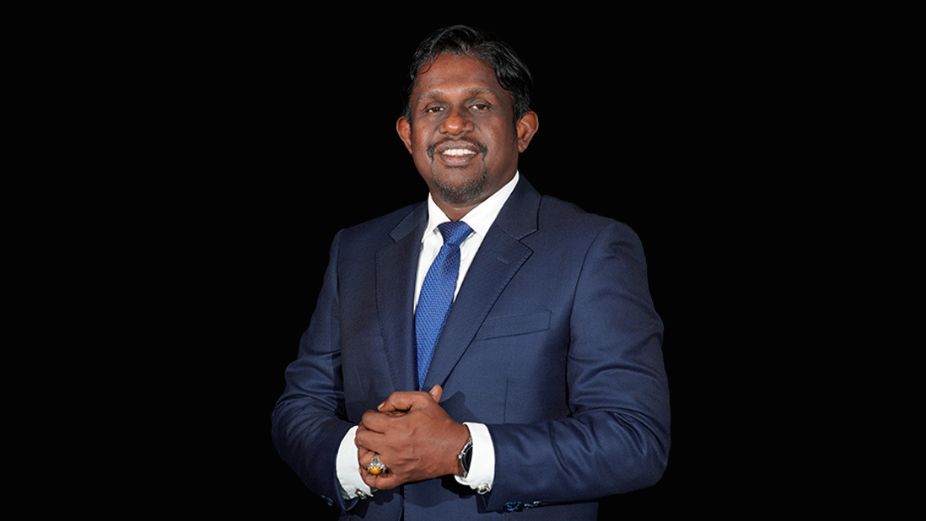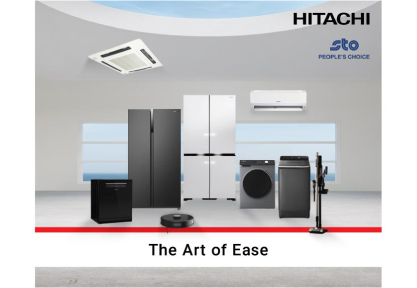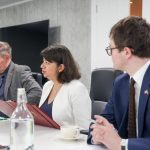
At the heart of Ooredoo Maldives’ two-decade transformation is Hussain Niyaz, a former military technician who helped build the company’s network from the ground up, often quite literally. Now serving as the company’s first local Chief Commercial Officer, Niyaz represents both the history and the future of telecoms in the country. It is a journey that spans cables laid across the ocean floor, towers raised on remote islands, and an infrastructure ready for an AI-driven era.
Since joining Ooredoo (then Wataniya) during the 2G era, Niyaz has been part of every major network milestone, from expanding fixed broadband to all inhabited islands to preparing the country’s digital backbone for 5G and beyond. But beneath the technological achievements lies something more personal, a belief in digital inclusion, shaped by memories of crisis and a desire to ensure that no island, no household, and no person gets left behind.
We sat down with Niyaz to reflect on Ooredoo’s 20-year journey, his own path from fieldwork to the boardroom, and how the company is preparing for the next leap in connectivity and innovation.
Q1. It’s been 20 years since Ooredoo entered the Maldives. What is one moment from the early days that still defines what this company stands for?
There are many moments I could point to, but one that really stands out is when we finally received the licence for fixed broadband. That came a full decade after we got our initial mobile licence in 2005. Getting the green light in 2015 was not easy. We had to push through countless obstacles and lobby across three different administrations. But it paid off. We laid submarine cables across the country, and for the first time, households on islands were truly connected. That shift was about more than just technology. It meant people on remote islands had access to the same opportunities as those in the capital. We didn’t stop there.
Another milestone was the move to our new headquarters. It took years of planning, negotiations, and perseverance, from land acquisition to building through the challenges of COVID-19. When we started, Central Park didn’t even exist. People used to say Wataniya wouldn’t survive, but here we are, two decades later, leading the market. What defines us is this unwavering commitment. We never gave up.
Q2. You made the leap from national service to telecoms, from defence electronics to digital infrastructure. What convinced you that this was the right frontier to build next?
I’ve been drawn to electronics since I was a child. My father used to repair TVs and radios, and I would sit beside him, learning the ins and outs. That early exposure stayed with me. I entered the national service through the electronics division, where I worked on everything from CCTV to telephones and walkie-talkies.
When I heard Wataniya was entering the Maldives, I was immediately curious. The field of radio frequencies fascinated me. At that point, I was already handling communication devices in the military, and joining a telecom company felt like a natural extension of that path. So I took the leap and joined as an RF technician during the 2G era.
Back then, the internet wasn’t what it is today. It was still dial-up, mostly used to check the news or basic communication. There was no Facebook or WhatsApp. I loved the field. In my Grade 10 yearbook, I wrote that I wanted to work in electronics, and somehow, life found a way to take me there.
Eventually, my colleague Shabeen and I realised we had reached a ceiling in terms of technological growth in the military. We knew we needed to look beyond if we wanted to continue learning and building. That’s when we approached Wataniya. The rest, as they say, is history.
Q3. You helped build the network from the ground up, sometimes quite literally. What did that kind of fieldwork teach you that boardrooms never could?
My journey started in the field, not in a meeting room. I was a technician first. I installed towers, ran cables, mounted antennas — all the hands-on work that makes a network function. That’s where I learned the foundation of this business, and I’m grateful for it.
Years later, when the company was looking to bring someone with technical experience into a commercial role, I was approached. They needed someone who understood the technology, who could communicate in Dhivehi, and who could represent the company well. I had never seen myself in a commercial role before, but I took the opportunity seriously.
Coming from a technical background gives me a different lens in the boardroom. I’m not just discussing strategy. I understand what it takes to execute that strategy in the real world. I know how the technology works, where the challenges are, and how to overcome them. That perspective is something not everyone brings to the table, and it’s a strength I carry with me to this day.
Q4. Ooredoo has introduced every major network milestone, from 3G to 5G. What was the breakthrough moment when you realised the Maldives was ready to go fully digital?
The turning point was when we brought 4G connectivity to every inhabited island in the Maldives. From the very beginning, even when we were operating on 2G, we believed that the future of communication in the Maldives would revolve around the internet. Today, we talk about AI as the next frontier. But back then, our sights were set on getting people connected and online.
Today, every island in the Maldives has 4G, and around 80 percent already have access to 5G. We’ve built two major data centres, one in Malé and one in Kulhudhuffushi, both connected via submarine cables directly to Singapore and France. These centres are ready for the future. We’ve even partnered with NVIDIA and prepared our infrastructure for AI workloads.
When you think about it, people don’t even remember buffering anymore. That’s because we’ve designed a network to meet today’s demands and tomorrow’s possibilities. The pandemic didn’t knock us offline. That’s a sign of strength. We built with resilience and readiness in mind. Today, we are ready for tomorrow.
Q5. Digital inclusion has been a recurring theme in your leadership. Was there a moment that made this personal for you?
Yes, absolutely. I was serving in the military during the 2004 tsunami. Communication across the country broke down completely. People had no way of knowing whether their loved ones were safe. In some islands, communication was down for up to four days. I remember seeing the fear and frustration in people’s eyes.
I was working in the communication coordination unit at the time. Colonel Nazim instructed us to bring every boat’s radio onto a single common frequency. That way, we could at least restore basic communication across the islands. It was a difficult moment, but it showed me how essential communication is, especially in a country like ours, where people live scattered across the sea.
That experience stuck with me. When Ooredoo started building its network, we kept those lessons close. For an island nation, digital inclusion isn’t a luxury. It’s a necessity. And we have always tried to build a network that never leaves anyone behind, not in a crisis, and not in everyday life. We designed and built our network with resilience in mind.
Q6. AI is transforming telecoms, from predictive service to customer engagement. How do you see it shaping the next chapter for operators like Ooredoo?
AI has already become part of our everyday operations. People may not realise it, but it’s already here. From customer service bots to network management, we use AI in ways that improve efficiency and reliability.
Take something simple, like a call handover between two towers. That used to be manual. Today, AI handles it seamlessly. That’s why calls don’t drop when people are on the move. We call it a self-optimising network (SON). It’s intelligent, it learns, and it adjusts in real time.
Internally, we’re using tools like Microsoft’s Co-Pilot to enhance our work. AI isn’t something we’re waiting for. It’s something we’re using. And as the pace of change accelerates, we have to keep evolving. It took years to move from 2G to 3G, and then to 4G. But 5G came quickly. Now, the industry is already exploring 6G. We intend to stay ahead of that curve.
Q7. You are the first local C-level executive at Ooredoo Maldives. What does that milestone mean to you today, and what kind of precedent do you hope it sets for future leaders?
It means a great deal to me. To be the first Maldivian in a C-level role at a global telecom company like Ooredoo is something I never imagined when I started out as a technician. It’s a huge responsibility. Commercial is a demanding portfolio; it covers everything from customer experience and sales to brand and distribution. There’s a lot to manage.
In sectors like tourism, we’ve seen Maldivians rise to leadership positions even in international companies. In tech, that hasn’t happened as much. But I believe it will. We are already investing in our people. We’ve sent colleagues to leading institutions like Harvard. The talent is here. What’s needed is the opportunity and the belief.
I hope my story shows that it’s possible. That someone who starts on the ground can rise to the top. And more importantly, I hope it encourages others to keep pushing forward.
Q8. Describe Ooredoo’s 20-year journey in three words. No explanations, just the words.
Communication. Revolution. Technology.










